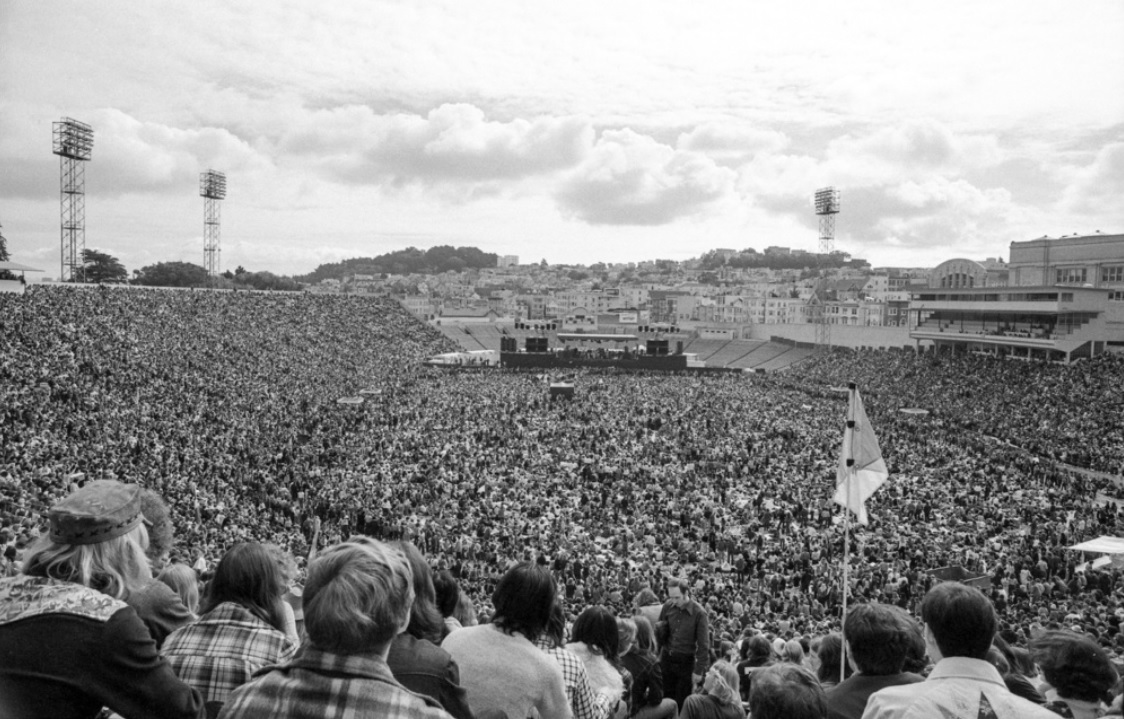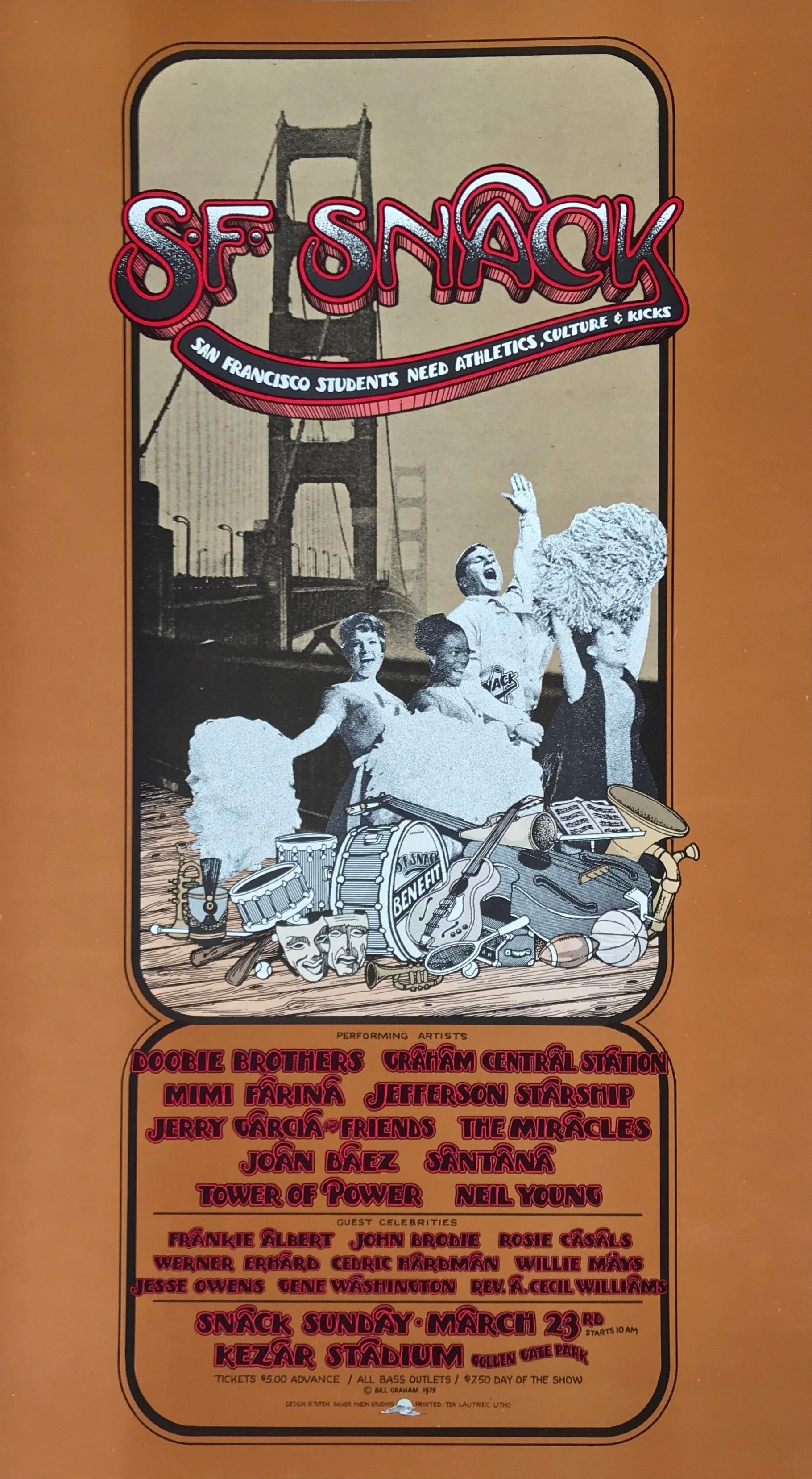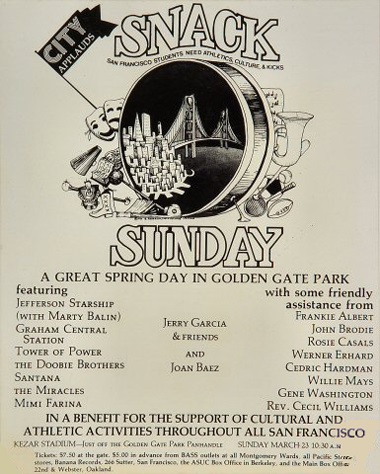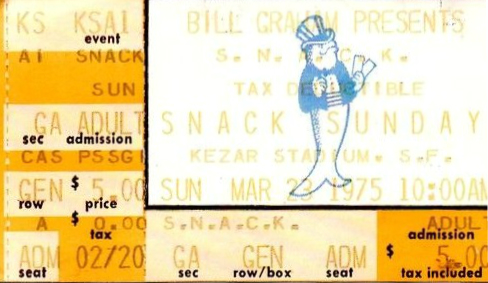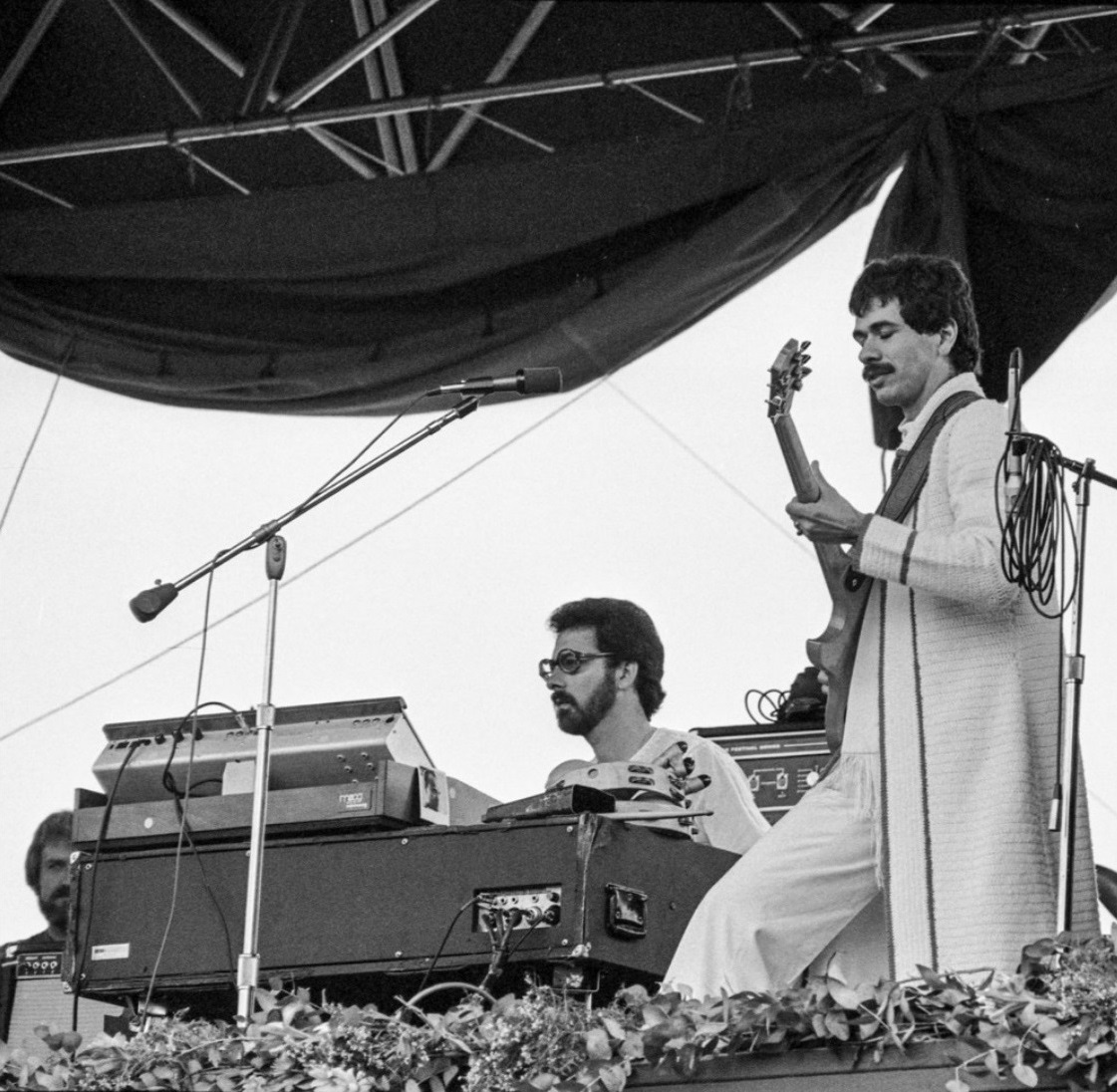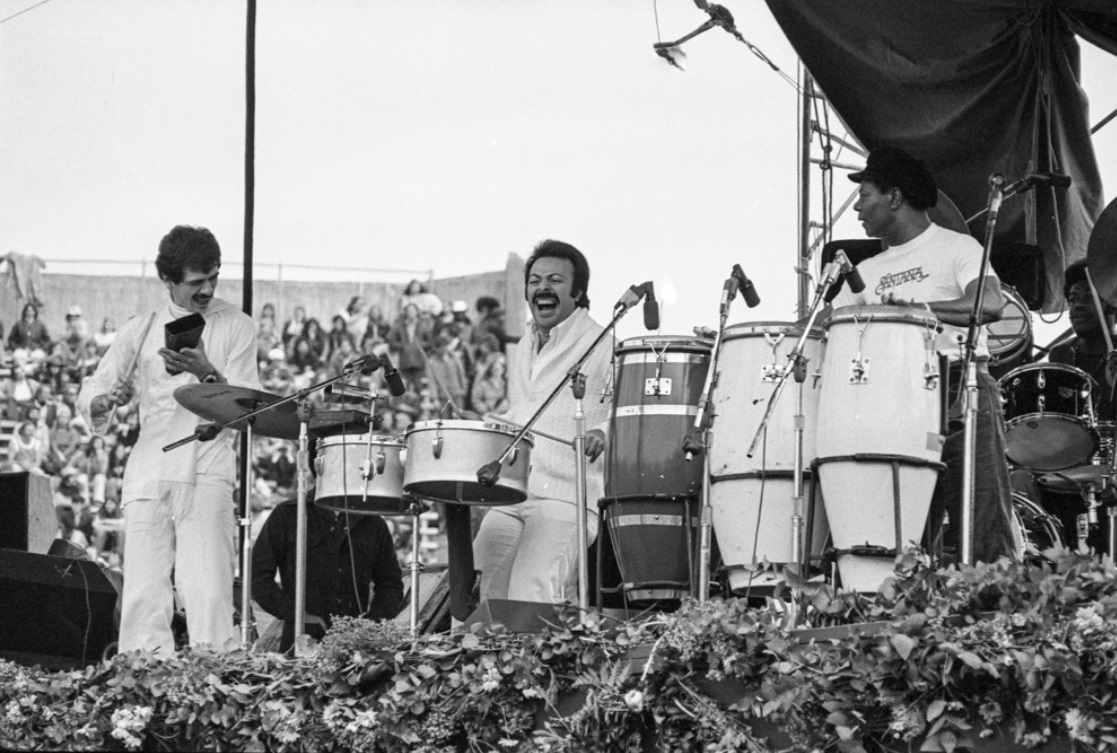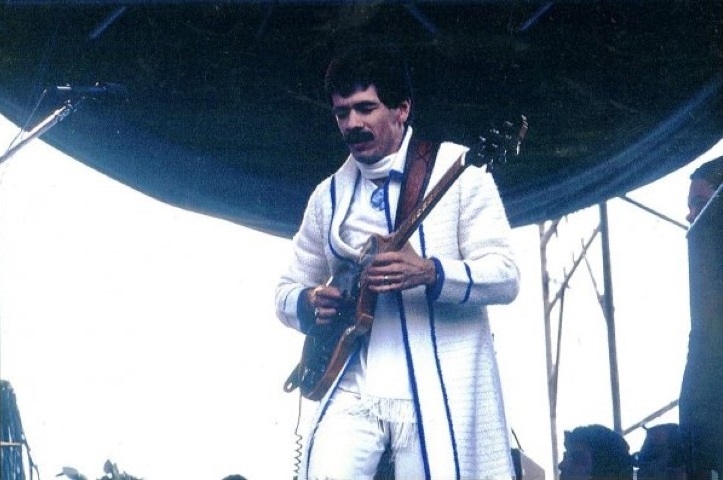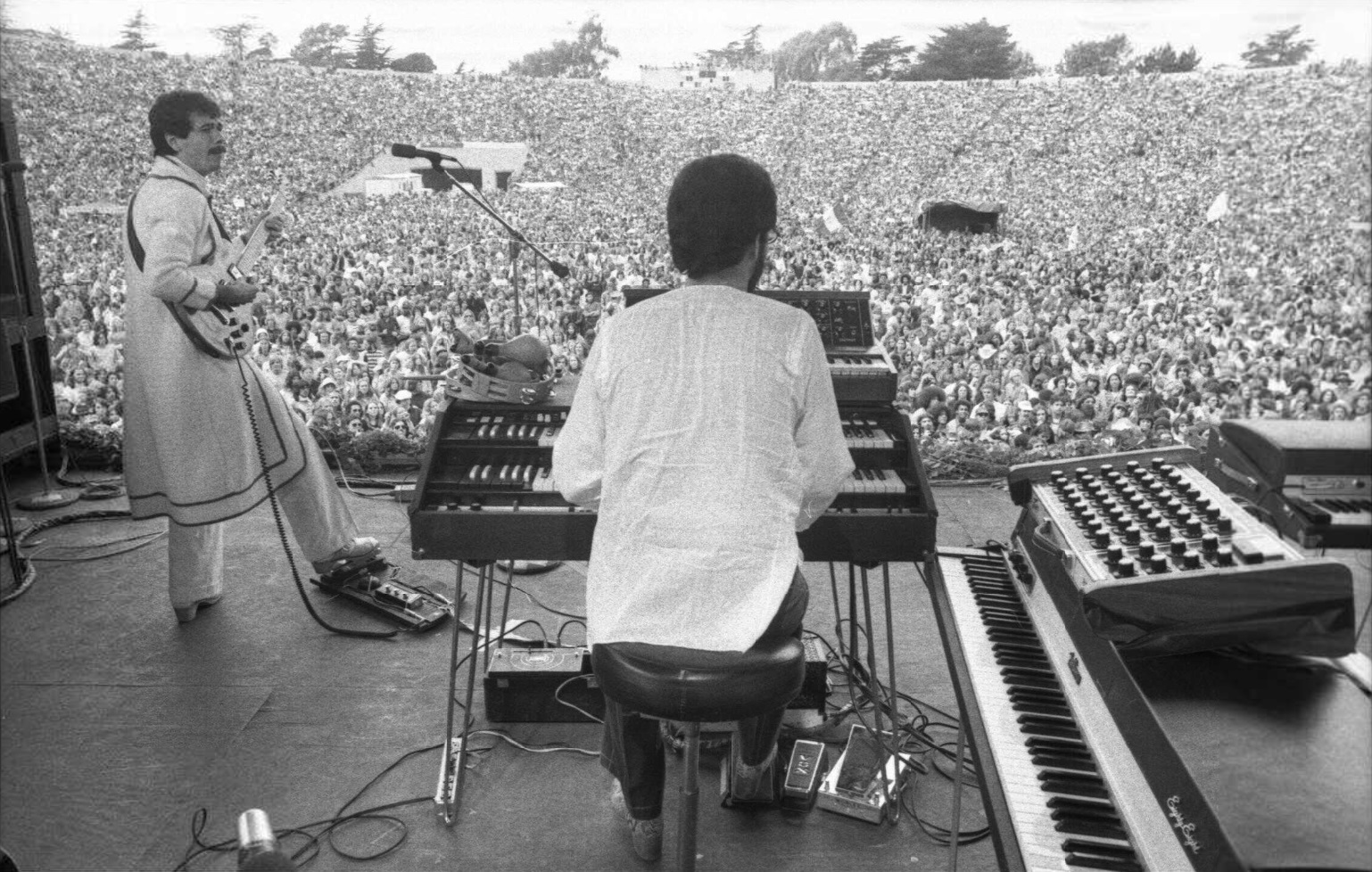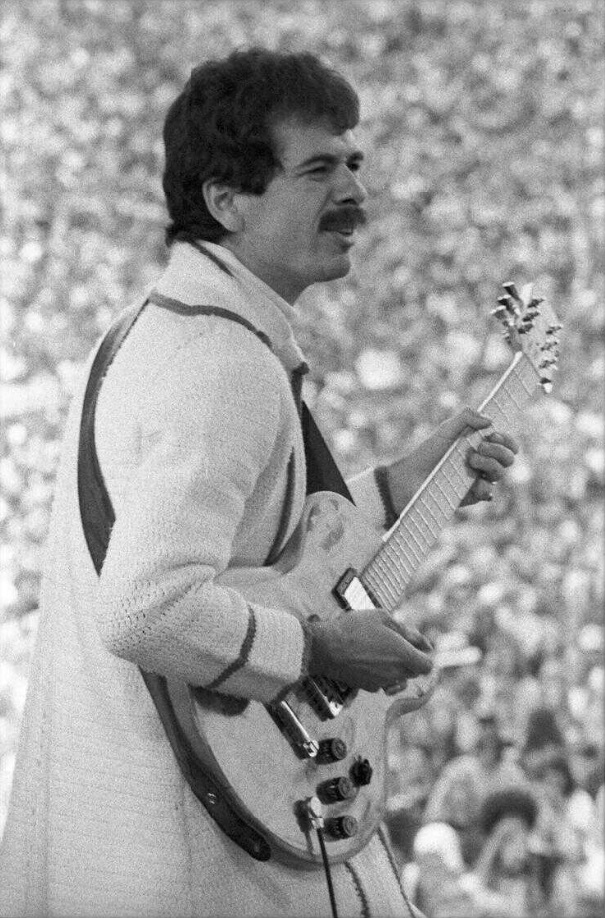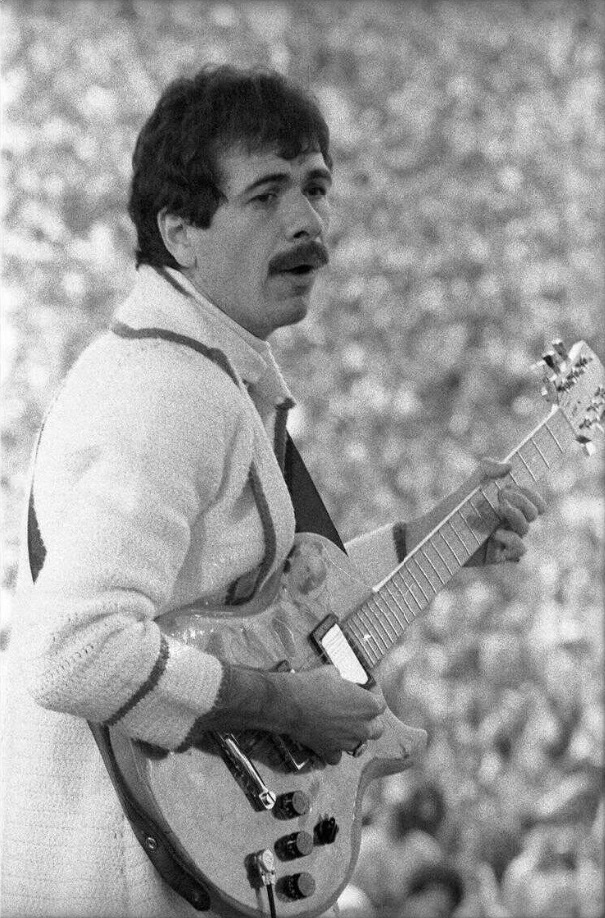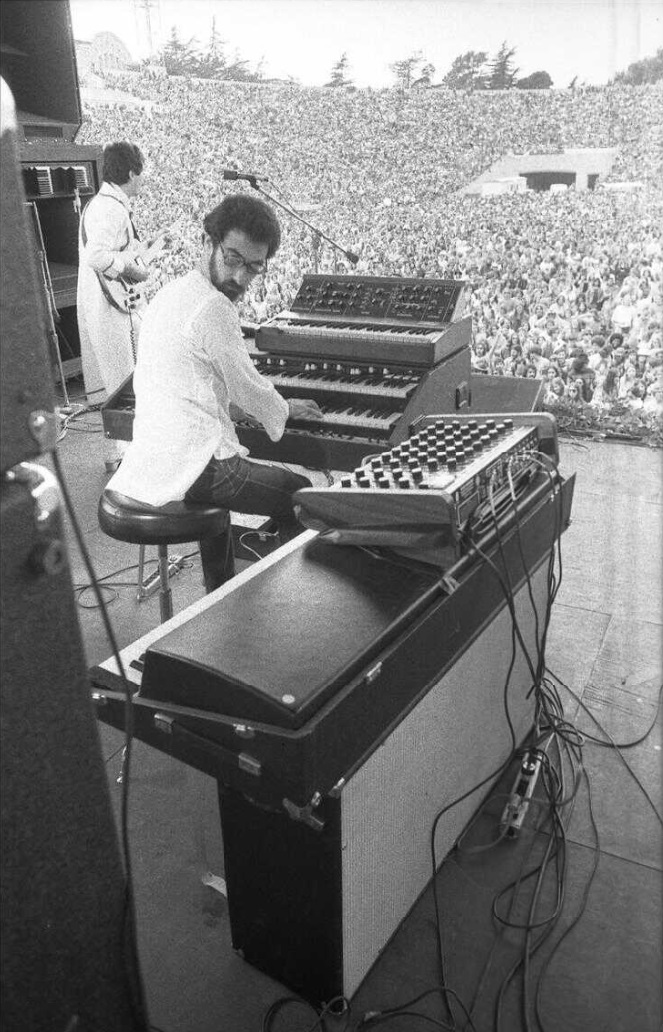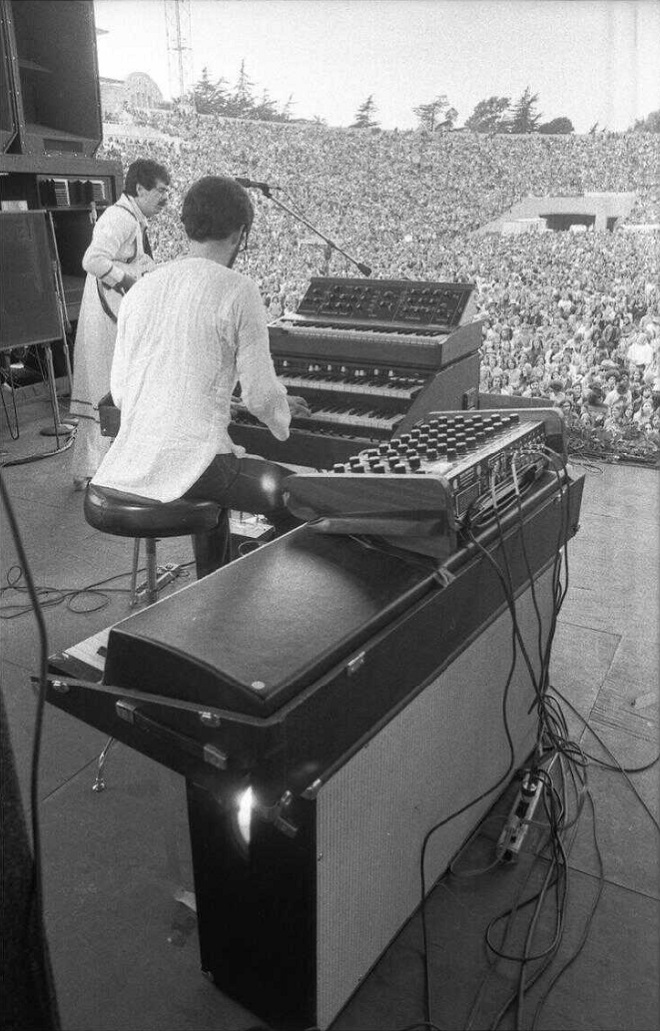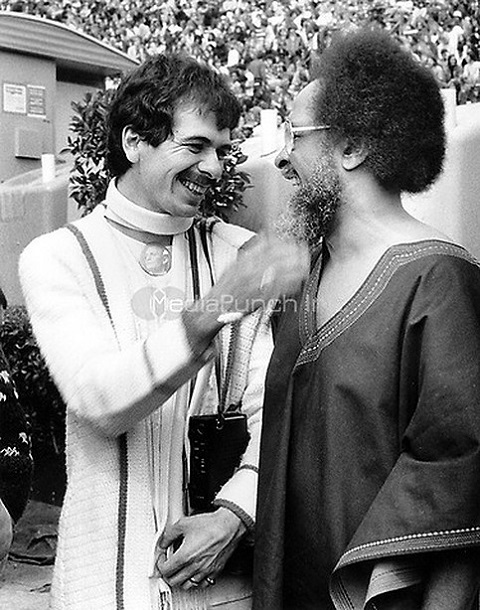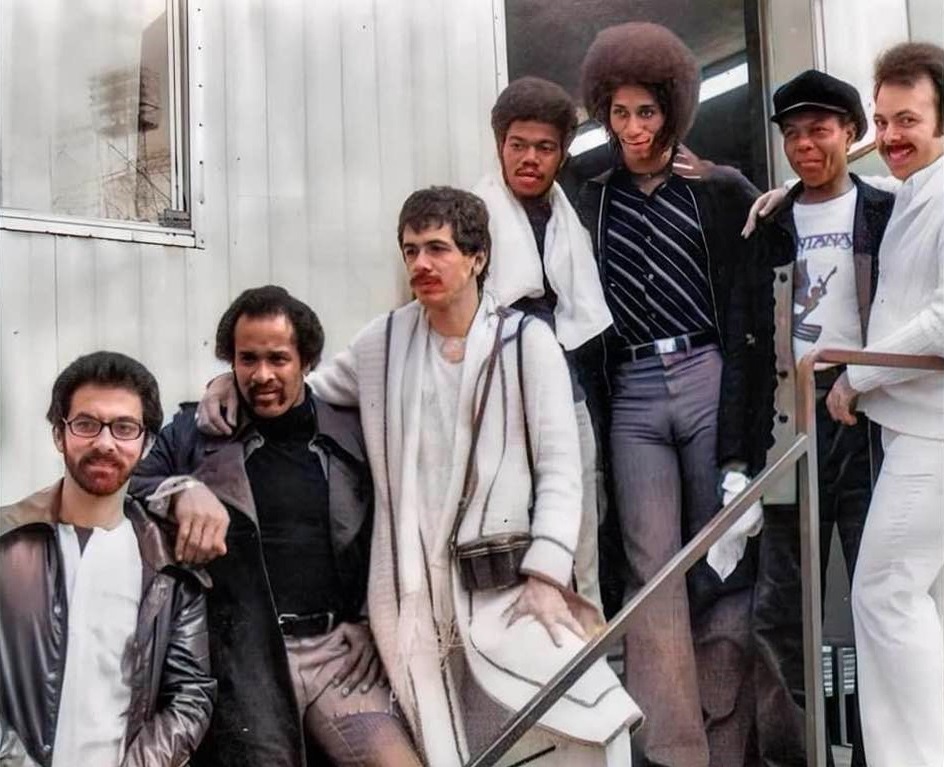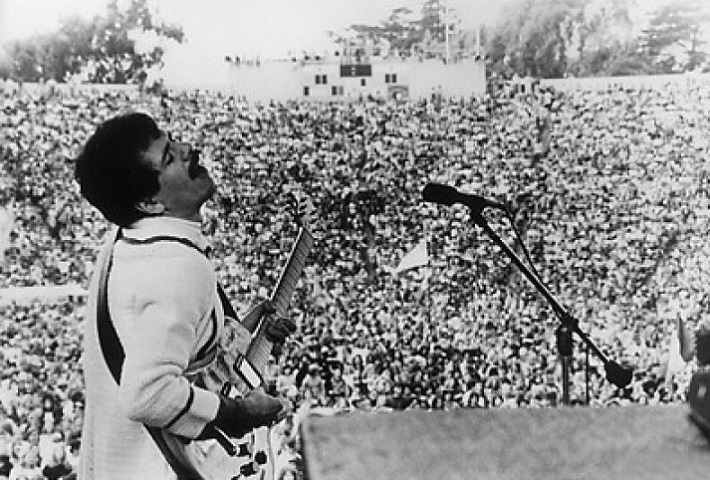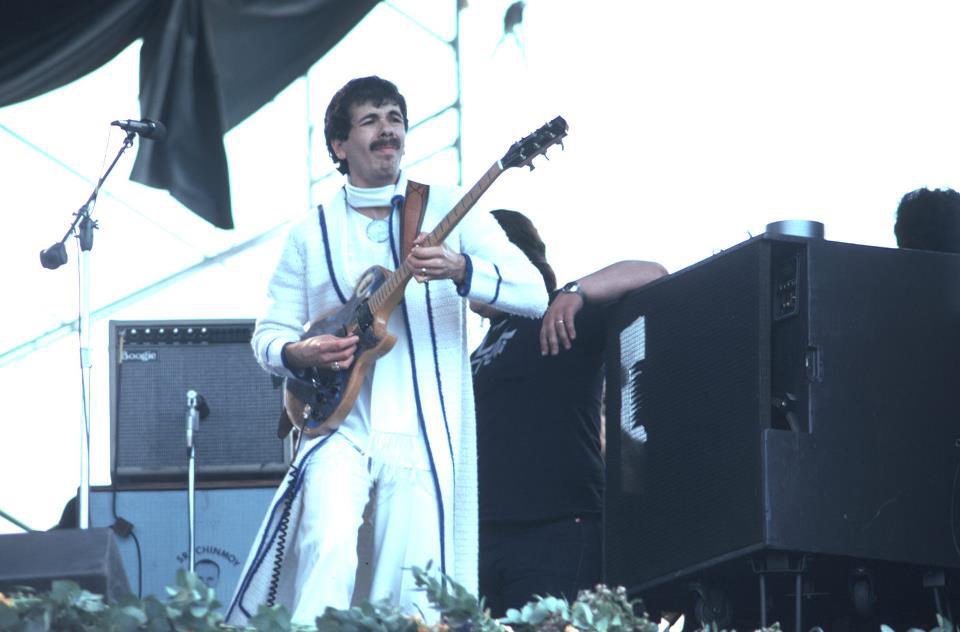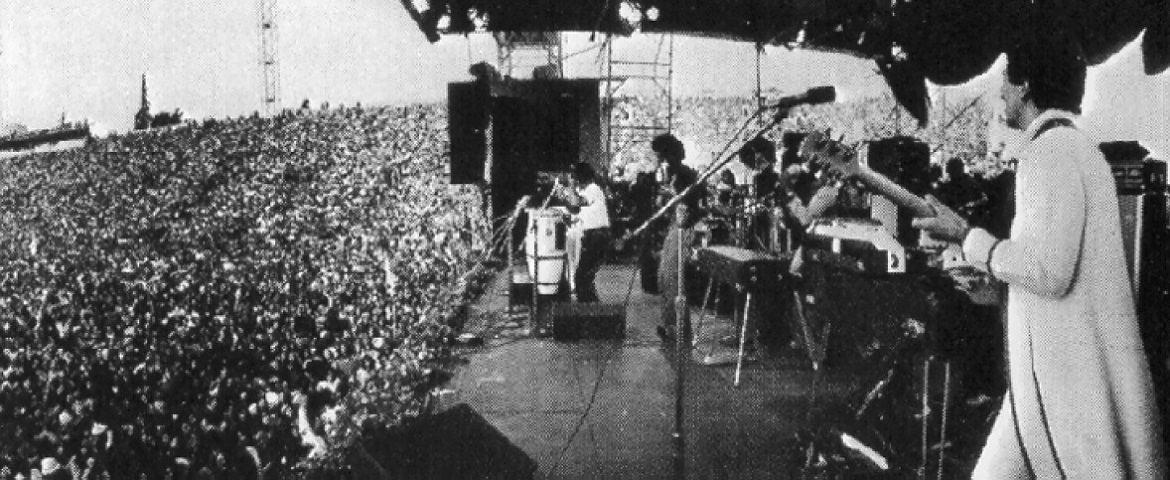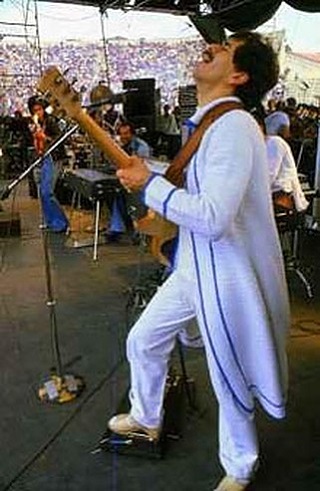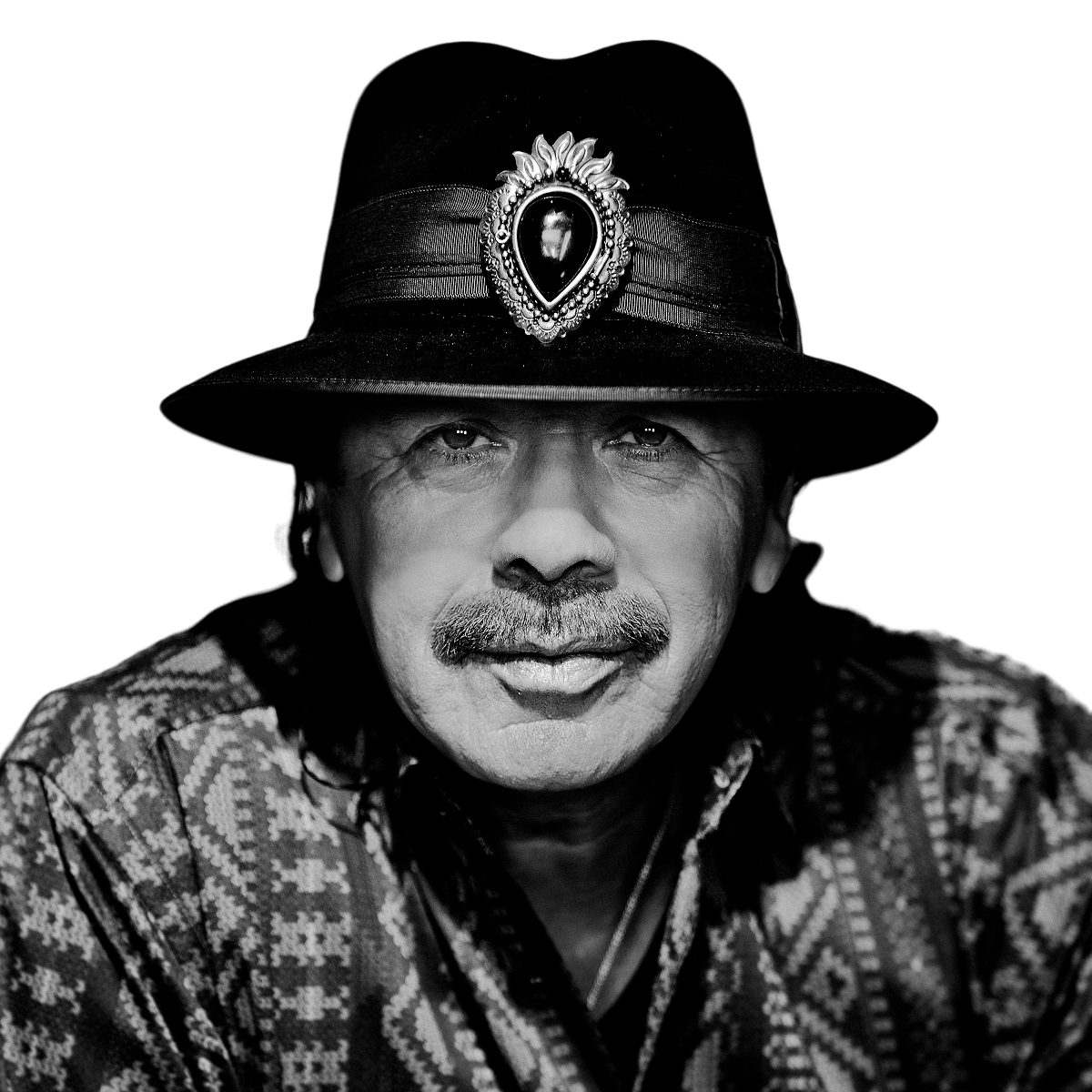|
The Venue Arnold Woods: The SNACK at Kezar: A Closer Look. Open SF History 2000 Rock and roll has long been used as an instrument to raise funds for worthy programs. From the Concert for Bangladesh in 1971 to Live Aid in 1985 to Neil Young’s local Bridge School Concerts, music has brought people together to support noble, but underfunded causes. Here in San Francisco, one of the earliest such benefits brought together a lot of local rock and roll royalty to ensure local school sports, music, and arts education endured. In 1975, the San Francisco school board, facing budget issues, announced that they would have to cut various programs. Among the first cuts were all extra-curricular activities, such as music and drama which were announced on January 28, 1975.1 A week later, athletic programs also got the axe. Other programs were also cut, school maintenance was delayed, and some employees were scheduled for layoff as the school district attempted to make up budget deficits that ran into the millions of dollars. Local music promoter Bill Graham was dismayed at all the programs being cut, so he decided to do something about it. On February 10, 1975, he announced that he would mount a “benefit extravaganza” at Kezar Stadium to raise money so the San Francisco Unified School District could keep its sports and extra-curricular programs. The ticket price for the concert would only be $2, though Graham stated that he believed the attendees would donate additional monies during the all-day show. Besides musicians, Graham declared that “the whole range of the entertainment world will be represented.” Mayor Joseph Alioto, who joined Graham for the announcement, pledged $10,000 of his own money toward the cause. On February 19, 1975, Graham announced that the show, dubbed the SNACK concert, would be held on Sunday, March 23, 1975. SNACK was an acronym for Students Need Athletics, Culture and Kicks. Although he had initially announced a $2 ticket price, Graham said the tickets would cost $5 so they could save more programs. The initial line-up included Jefferson Starship, Santana, Joan Baez with her sister Mimi Farina, Jerry Garcia & Friends, Tower of Power, and Graham Central Station. Celebrities like Willie Mays, John Brodie, Frankie Albert, Jesse Owens, Rosie Casals, and Glide Church’s Reverend Cecil Williams were also scheduled to appear. Graham promised that he was not done booking for the event. Soon Graham brought the news that the Doobie Brothers and the Miracles had been added to the bill. Graham wasn’t done yet though. In early March 1975, he announced that Neil Young would appear, backed by two members of The Band, Levon Helm and Rick Danko. Within three weeks, all tickets for the SNACK benefit at Kezar Stadium had been sold. With the concert sold out, Graham sold the radio simulcasting rights to K-101 for $12,000. With some possibility of rain in March, it was announced ahead of time that the SNACK show would happen “rain or shine” because it would be impossible to get the roster of artists together on another date. Those familiar with Kezar Stadium knew there were no covered areas for fans to wait out bad weather. Finally, the big day arrived. At 9:00 a.m. on Sunday, March 23, 1975, the Eddie Palmieri Orchestra hit the stage to warm the crowd up with some Latin Salsa music. They were followed by the funky sounds of Graham Central Station, who played one of the longer sets of the day because the Miracles were unable to make it there after their flight was canceled. Much of the Grateful Dead, billed as Jerry Garcia & Friends, finished out the morning music. The music sets were generally about a half-hour each. While the crew was setting up each performer’s equipment, celebrities took to the stage to make further appeals for donations. Among the celebrities were a number of San Francisco 49er greats, including John Brodie, Frankie Albert, Cedric Hartman, and Gene Washington, who told the crowd that he had “never witnessed this kind of enthusiasm in this stadium for any event.” The biggest ovation of the day went to San Francisco Giants superstar Willie Mays, then only a year and a half into his retirement. Marlon Brando made a surprise appearance to urge the crowd with a “colorful speech” to donate to Native Americans. Brando said he was also donating $5,000 to the SNACK cause. Tower of Power, then still breaking in new lead singer Hubert Tubbs, kicked off the music in the afternoon. Next came Santana and his sizzling guitar, followed by the Doobie Brothers. The Examiner’s Philip Elwood declared the Doobies to be the “hands-down best during the long concert,” because they had a number of top 40 hits and “generate gut-level enthusiasm.” Jefferson Starship, then riding high with their recently released “Miracles” single, appeared next and were another big favorite with the mostly teenage crowd. In the late afternoon/early evening, Joan Baez took to the stage with her signature folk music sound. The final act of the day was to be Neil Young with members of the Band, but they had an even bigger surprise in store. Joining them on stage was Bob Dylan. The All-Star group did renditions of Young’s “Helpless” and Dylan’s “Knocking on Heaven’s Door” and closed the night with a rendition of the Nitty Gritty Dirt Band song, “Will The Circle Be Unbroken.” The entire day ran smoothly and police were impressed by the lack of issues caused by the large crowd. Shortly before the SNACK benefit, San Francisco schools discovered an extra $2.1 million in funds, so there was some doubt on the day of the show where the monies raised would go. Graham said that was a “strange mistake,” but that the money would be deposited into a benefit fund until the performers decided what to do with it. Ultimately though, the proceeds did go to the school district for athletics and arts programs. After a meeting with Mayor Alioto and school district officials, Graham was satisfied that the money was still needed, but required that they provide monthly reports on how the funds were spent. Alioto stated afterwards that he asked Graham to consider establishing a summer rock festival in the City. A little over 25 years later, not one, but two annual summer music festivals in Golden Gate Park began and continue today. |
|||||||||||
|
|||||||||||
Memorabilia |
|||||||||||
|
The Band: Santana #18 Carlos Santana (guitar/percussion/vocals), David Brown (bass), “Ndugu” Leon Chancler (drums), Armando Peraza (percussion/vocals), Tom Coster (keyboard/vocals), Leon Patillo (keyboard/vocals) Guests Joan Baez, Mimi Farina, Orestes Vilato Incomplete Set List Band Introduction/Incident At Neshabur - Black Magic Woman/Gypsy Queen - Let The Children Play/Oye Como Va - Toussaint L'Overture - Soul Sacrifice Note Broadcast at an unknown date on American radio K101. Guest Orestes Vilato will join the Santana Band in March 1980 (Santana #30). |
Photos by Various Authors |
|||||||
|
|||||||
|
|||||||
|
|||||||
|
|||||||
|
|||||||
|
|||||||
|
|||||||
Uncredited Photos |
|||||||
|
|||||||
|
|||||||
|
|||||||
|
|||||||
|
|
